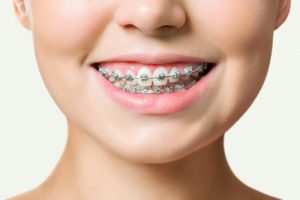
Root Resorption Braces: Unveiling the Connection
2024-05-15Contents
- 1 Introduction to Root Resorption: What Is It and Why Does It Matter?
- 2 The Link Between Orthodontic Braces and Root Resorption
- 3 Identifying Risk Factors for Root Resorption with Braces
- 4 Symptoms and Detection: How to Recognize Root Resorption
- 5 Preventive Strategies to Minimize Root Resorption in Orthodontic Treatment
- 6 Treatment Options and Management of Root Resorption
- 7 The Role of Dental Technology in Reducing Risks
- 8 References
Exploring the phenomenon of the root length and resorption associated with braces reveals a complex relationship that every orthodontic patient should be aware of. The condition root resorption braces points to a potential side effect of orthodontic treatments, where the length of tooth roots may be affected. This article delves into why this happens, the factors that increase its likelihood, and how modern orthodontics aims to mitigate these risks. Stay tuned to uncover essential insights that could protect your smile’s foundation while achieving perfect alignment.
Introduction to Root Resorption: What Is It and Why Does It Matter?
Root resorption is a significant concern in orthodontics, referring to the process where the structure of a tooth’s root is broken down and absorbed by the body. Understanding root resorption refers to what it is and why it matters, and it is crucial for anyone undergoing or considering orthodontic treatment.
Definition and Occurrence: Root resorption involves the loss of hard dental tissue, particularly the tooth roots, often due to pressure from orthodontic treatments like braces. This condition can affect anyone but is more prevalent among those with a genetic predisposition or underlying dental issues.
Impact on Oral Health: While often mild and clinically insignificant, severe root resorption can lead to tooth instability and, in extreme cases, tooth loss. This makes it a critical issue to monitor during and after orthodontic treatment.
Mechanism: The phenomenon typically occurs due to the mechanical stress placed on teeth during movements, which disrupts the balance and health of permanent teeth and the surrounding bone and periodontal ligament.
Detection and Monitoring: Early detection through regular X-rays and monitoring by an orthodontist can help manage the extent of resorption. Panoramic radiographs are commonly used to assess the condition before and during treatment.
Management Strategies: Managing root resorption involves adjusting the normal orthodontic forces applied, reducing treatment time when possible, and using alternative orthodontic techniques if traditional braces exacerbate the condition.
The Link Between Orthodontic Braces and Root Resorption
The relationship between orthodontic braces and root resorption is a critical aspect of dental health that warrants attention from orthodontic patients and orthodontists. Understanding how braces can potentially lead to root resorption helps manage and mitigate the risks associated with orthodontic treatments.
- Orthodontic Pressure: The primary link between braces and root resorption is the pressure exerted on teeth during orthodontic treatment. Braces work by applying continuous force to move teeth into desired positions, but this pressure can also stimulate root resorption by causing stress on the tooth’s root structure.
- Susceptibility Varies Among Individuals: Only some are equally susceptible to root resorption. Factors such as genetic predisposition, the density of the alveolar bone, and the health of periodontal tissues can influence an individual’s risk level. Those with thinner root structures or a history of dental trauma may be more prone to resorption.
- Severity and Frequency: Root resorption can occur with any orthodontic treatment, but its severity varies widely. In most cases, the resorption is minor and may not have significant long-term effects on tooth health. However, in rare cases, the resorption can be severe enough to require intervention, such as endodontic treatment or, in extreme cases, tooth extraction.
- Detection and Management: Regular dental X-rays and monitoring by an orthodontist are crucial for detecting early signs of root resorption. Early detection allows for adjustments in the treatment plan, such as modifying the amount of force applied or changing the direction of tooth movement to minimize further damage.
Identifying Risk Factors for Root Resorption with Braces

Identifying the risk factors associated with root resorption when undergoing orthodontic treatment with braces is crucial for minimizing potential complications and ensuring teeth health. Here are the key risk factors to consider wearing braces for:
- Genetic Predisposition: Some individuals are genetically more susceptible to root resorption. This genetic variability affects how the teeth and surrounding tissues respond to orthodontic forces, making some people more prone to resorption.
- Amount and Duration of Orthodontic Forces: The magnitude and duration of force applied by braces significantly influence the likelihood of root resorption. Excessive force or prolonged treatment can increase stress on the roots, leading to a higher risk of resorption.
- Previous Dental Trauma or Infections: Teeth that have previously experienced trauma, such as impacts from accidents, or those that have undergone significant dental procedures like root canals are more vulnerable to root resorption during orthodontic treatment.
- Age of the Patient: Older patients tend to have a higher risk of root resorption. As teeth and bones mature, they may become less adaptable to the changes induced by braces, potentially leading to an increased risk of root issues.
- Tooth Anatomy and Position: The anatomical characteristics and original position of teeth can also be risk factors. Teeth with shorter roots or those in abnormal positions (like impacted teeth) may be at greater risk when subjected to orthodontic movements.
- Health of Periodontal Tissue: The condition of the gums and supporting bone structures plays a critical role in how teeth respond to the forces applied by braces. Poor periodontal health can exacerbate the risk of root resorption.
Symptoms and Detection: How to Recognize Root Resorption
Recognizing root resorption early in patients undergoing orthodontic treatment with braces is key to effectively managing and mitigating its impact. Here’s what to look for in terms of symptoms and detection of external resorption:
- Symptoms of Root Resorption:
- Sensitivity and Discomfort: One of the first signs might be an unexplained sensitivity or discomfort in the affected tooth, particularly to hot, cold, or sweet stimuli.
- Visible Changes in Tooth Appearance: In severe cases, the tooth may be visibly shortened, or the tooth crown’s shape may change, although this is less common.
- Loosening of the Affected Tooth: As the root structure deteriorates, the tooth’s stability might be compromised, leading to a feeling of looseness.
- Detection Techniques:
- Regular Dental X-rays: Dental X-rays are a primary tool for detecting root resorption. They can show changes in the root structure that are not visible to the naked eye.
- Periodic Evaluations: Regular check-ups with the orthodontist allow for ongoing assessment of the teeth’s condition throughout treatment. These evaluations can help spot early signs of resorption.
- Cone Beam Computed Tomography (CBCT): For a more detailed view, CBCT can provide three-dimensional images of the teeth and their roots, offering a clearer assessment of any resorption occurring.
- Clinical Examinations: Physical exams of the teeth can detect any mobility or morphological changes in the crown and root of the teeth indicative of resorption.
Preventive Strategies to Minimize Root Resorption in Orthodontic Treatment
Minimizing tooth root resorption during orthodontic treatment is essential to maintain the integrity of teeth long-term. Here are some effective preventive strategies that orthodontists and patients can employ:
- Moderate Application of Orthodontic Forces: Using the lightest possible force that is still effective can help reduce the risk of root resorption. Orthodontists should carefully calibrate the pressure applied by braces to move teeth gradually and gently.
- Regular Monitoring: Frequent dental check-ups and X-rays are crucial for early detection of any signs of root resorption. Regular monitoring allows orthodontists to adjust treatment plans if any early signs of resorption are detected.
- Limiting Treatment Duration: Prolonged orthodontic treatment increases the risk of root resorption. Orthodontists need to design treatment plans that are efficient and as brief as feasible without compromising the treatment goals.
- Using CBCT Scans: Employing Cone Beam Computed Tomography (CBCT) can provide a more comprehensive view of the teeth and their roots, allowing for more precise treatment planning and early identification of potential resorption.
- Customizing Treatment Plans: Individual assessment of risk factors, such as age, root shape, and previous dental history, should be considered when planning orthodontic treatment. Customizing the approach based on the patient’s specific risk profile can help minimize potential damage.
- Educating Patients: Informing patients about the importance of maintaining excellent oral hygiene and following all orthodontic care instructions can help minimize additional risk factors for root resorption, such as inflammation from poor dental hygiene.
- Periodontal Support: Maintaining good gum health through regular cleanings and appropriate care can also support the overall health of the teeth during orthodontic treatment, thereby reducing the risk of resorption.
Treatment Options and Management of Root Resorption



When root resorption occurs or is detected during orthodontic treatment, managing and treating it effectively is crucial to preserve the health of the affected teeth. Here are several strategies and treatment options for addressing root resorption:
Adjusting Orthodontic Forces: One of the first steps in managing root resorption is modifying the orthodontic forces applied to the teeth. This may involve reducing the amount of force or altering the direction of force to minimize stress on the affected roots.
Temporary Cessation of Treatment: In cases where resorption is significant, it may be necessary to temporarily halt orthodontic treatment to assess the progression of the resorption and allow the tooth some time to stabilize.
Root Canal Treatment: A root canal may be required for severe resorption that has reached the pulp or caused pulp necrosis. This procedure involves removing the damaged pulp, cleaning the root canal, and sealing it to prevent further damage and infection.
Tooth Splinting: If root resorption has led to tooth mobility, splinting the affected tooth to adjacent teeth can provide stability and reduce movement, helping to manage symptoms and prevent further resorption.
Extraction and Replacement: In extreme cases where the resorption is extensive, and the tooth’s structural integrity is compromised, extraction may be the only viable option. The removed tooth can then be replaced with a dental implant or bridge to restore functionality and aesthetics.
Fluoride Treatments: Applying fluoride can strengthen tooth enamel and possibly slow the progression of root resorption by enhancing the tooth’s resistance to acidic environments created by orthodontic treatments.
Regular Monitoring: Continued monitoring with X-rays and dental examinations is vital. Regular assessments help track the progress of resorption and adjust treatment strategies accordingly.
Patient Education: Informing patients about the signs of root resorption and the importance of reporting any new symptoms promptly can aid in early detection and treatment, potentially limiting the extent of damage.
The Role of Dental Technology in Reducing Risks
The advancement of dental technology has significantly enhanced the ability to reduce risks associated with various dental treatments, including those linked to orthodontic procedures like root resorption. Here’s a look at how modern technology plays a critical role in minimizing these risks:
- Digital Imaging and 3D Scanning: Advanced imaging technologies, such as Cone Beam Computed Tomography (CBCT), provide detailed 3D images of teeth and jaw structure. This allows orthodontists to plan treatments with greater precision and predict potential problem areas where root resorption might occur. Better imaging also helps customize the force and direction of braces to minimize stress on the teeth.
- Computer-Aided Design (CAD) and Computer-Aided Manufacturing (CAM): These technologies design and create custom orthodontic appliances that fit perfectly. By ensuring a more accurate fit, the appliances distribute pressure evenly across the teeth, reducing the likelihood of excessive force on any single tooth and lowering the risk of root resorption.
- Robotic Orthodontics: Systems like robotic wire bending use algorithms to predict tooth movement and adjust the orthodontic wires automatically and accurately. This precision reduces the time needed for treatment and the amount of force applied, both beneficial in preventing root resorption.
- Pressure Mapping Technologies: Some newer braces systems include pressure sensors that provide real-time data on the force applied to each tooth. This information allows orthodontists to make immediate adjustments to prevent damage from excessive force.
- Laser Technology: Lasers are increasingly used in dental procedures, including removing soft tissue and minor bone reshaping. Their precision reduces trauma and damage to surrounding tissues, which can otherwise lead to complications like resorption.
- Teledentistry: This emerging field allows remote patient progress monitoring, making it easier to follow up and adjust treatment plans without frequent in-office visits. It facilitates early detection and intervention for potential issues such as root resorption.
In conclusion, while root resorption braces can pose a concern, understanding and managing the risks associated with orthodontic treatment can significantly mitigate potential damage. By staying informed about preventive measures and engaging in regular dental check-ups, patients can enjoy the benefits of preventing root resorption braces without compromising the health of their teeth. Effective communication with your orthodontist is key to maintaining a healthy, beautiful smile.
References
Apical root resorption caused by orthodontic forces
https://www.ncbi.nlm.nih.gov/pmc/articles/PMC3474562/
Orthodontic root resorption
https://www.sciencedirect.com/science/article/pii/S2212443821000473
Root Resorption with Orthodontic Mechanics
https://onlinelibrary.wiley.com/doi/full/10.1111/adj.12483
Orthodontic treatment and root resorption – Oxford Academic
https://academic.oup.com/ejo/article/43/4/442/5993861
ROOT RESORPTION AFTER ORTHODONTIC TREATMENT
https://journals.lww.com/kkuj/fulltext/2019/04010/root_resorption_after_orthodontic_treatment__a.1.aspx

